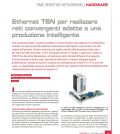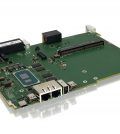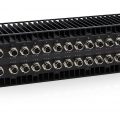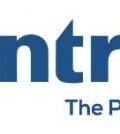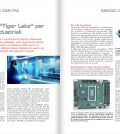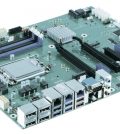SGET: a new standardization body for the embedded market
-

- Tweet
- Pin It
- Condividi per email
-
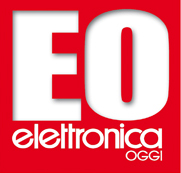
Dalla rivista:
Elettronica Oggi
Autore: Filippo Fossati
Read the italian version of the interview on Eonews-561
EONEWS: What are the main goals of SGET founding members? When will the first specifications be published?
HAUSER: The Standardization Group for Embedded Technologies has been founded by leading embedded computer manufacturers, namely Advantech, congatec, Data Modul, Kontron, MSC, SECO, and the publishers WEKA Fachmedien and Vogel Business Media, because it promises to be a standardization organization that works quickly and efficiently on new embedded standards. And now, with the publication of SMARC, the first vendor independent computer-on-modules standard that is dedicated to AMR/SoC designs, we have the technological foundation for upcoming ultra-low-power processors including our already launched SMARC Computer-on-Modules based on Nvidia Tegra 3, Freescale i.MX6 or TI Sitara AM3874.
EONEWS: What is the position of SGET compared with other similar organizations and/or standardization bodies such as VITA for example?
HAUSER: Each of the current standardization bodies, of which there are several, has its own particular focus on certain application areas. VITA is responsible for the specifications of the modular VME and VPX standards that are used in military and aerospace applications. There is also the PC/104 consortium as well as the PICMG, which both have a high degree of competence in modular system design and particularly with COM Express as the most important x86 form factor for Computer-on-Modules.
Thus the embedded industry has generated several special interest bodies that specialize in their own standards. For Computer-on-Modules based on ARM/SoC technology, the market needed a new standardization body because the varied interests of the manufacturers on the component level were slowing down standardization work unnecessarily on embedded module standards. But the industry demanded greater speed. That is why the embedded industry vendors have chosen to set up SGET.
EONEWS: What are the benefits for end users that an organization like SGET is able to provide?
HAUSER: In general, SGET provides exactly what all the other standardization bodies do: it delivers focused specifications for dedicated application areas. For the SMARC specification, announced by SGET, the focus is on providing standardized modules with a smart mobility architecture for the efficient design of ultra-low-power connected devices with a graphical user interface, such as embedded tablets for logistics, medical and military applications, slim HMIs for industrial control and POS/POI as well as wearable computers. Since the innovation cycles in the embedded industry are constantly getting shorter, SGET offers these services for the embedded market to keep pace with the latest technology advancements and provide the embedded market with what it needs: namely design security in an ever more rapidly changing environment.
 Norbert Hauser, Kontron Marketing vice president
Norbert Hauser, Kontron Marketing vice president
EONEWS: Last year Kontron entered in the ARM market: what are the results of this operation?
HAUSER: We launched a new ARM-based product nearly every second month last year. Now we have several computer-on-modules based on the SMARC standard as well as corresponding evaluation platforms and starter kits in place plus two motherboards in the Mini-ITX and Pico-ITX form factor. All products are inspired by the processor developments for smartphones and tablets and are based on the highly capable ARM processors. These are impressing developers with their graphics and processing performance at the lowest energy requirements as well as with their interfaces, which are perfectly suited to new and always-connected embedded applications. Thanks to these features, manufacturers of long-term available, rugged industrial devices, machines and systems can implement solutions with these processors that they were not able to offer either with less complex ARM designs or with more capable x86 designs. Consequently, a very attractive gap in the market has been bridged by making comparatively strong graphics and computing performance available on a broad range of boards and modules at lower single-digit watt power usage. And compared to more powerful solutions, these attractively priced modules are a perfect solution for price sensitive applications.
EONEWS: In a recent interview, a guy from Creative Strategies (a technology industry analysis and market intelligence company) said that because of the war between Intel and ARM over the next 18 months the result may be that laptops and tablets could come down in price by as much as 20-25%. Is this also the case for embedded applications?
HAUSER: We know that vendors talked about the 100 dollar computer several years ago but there is also a need to improve manufacturing technologies to optimize the performance per dollar ratio. Consequently it is not unusual to see lower prices for similar performance ranges or stable prices for even more powerful devices. It will be very interesting to see what will be achieved in the next years and I am happy that we are able to offer both technologies. With this approach we can offer our customers in all areas the most appropriate technologies for them. Today’s open economy ensures that lower processor prices are directly passed on to our customers and this is good for our economies of scale because the lower processor prices mean we can serve an even broader range of price sensitive applications.
EONEWS: The key differentiation of the ARM chips over Intel’s chips has been that they run at lower power levels than are needed to run Intel’s chips and they are much cheaper than the Intel processors on the market today. Is this statement really true? If yes, then what are the impacts on the embedded market?
HAUSER: This is only partially true, because you mentioned only two considerations for the total cost of ownership. Both technologies also differ in terms of their interfaces, initial software efforts and available eco systems and therefore serve somewhat different market segments. But this market segment is expected to become a major part of the entire embedded modules market. Studies by IMS and VDC indicate that we will see a compound annual growth rate of 25 percent for ARM-based COMs by 2016. So this underlines the need to define an appropriate open standard specification for this market, as these enormous growth rates are set to catapult the portion of ARM-COMs traded to just under 60 percent of the total COM market. So we do see a major trend towards ARM. But this defi
nitely does not mean that x86 is dead because there is still a huge market for x86 technologies that will remain stable or even grow for applications requiring scalable x86 processors on COM Express modules from basic to compact up to mini.
EONEWS: In a lot of embedded applications these days the graphical features are becoming more important. Will this trend help the diffusion of ARM architecture?
HAUSER: Yes. But we see the same trend in x86 platforms. New and upcoming x86 processors will offer improved graphics capabilities as well. So there is a generic trend to more user-friendly man-machine interfaces with attractive graphics as well as multitouch. This enables completely new options for how we use and interact with devices with zooming and scrolling or 10 finger typing on a screen-based keyboard. If we look at the markets which the ARM Cortex A9 or Cortex A8 processors target, we see that this combination of graphical features is becoming available in the lower single-digit watt range. This is exactly the performance class where x86 Atom class and ARM are currently fighting for market share. And here only the preferences of the application programmer should be decisive, as we ensure the hardware and software environment for the OEM are the same.
EONEWS: Could you give us more insight into Kontron’s roadmap for ARM architecture?
HAUSER: Our roadmap will be aligned to the ultra low-power designs of upcoming Arm/SoC launches for embedded technologies that fit the SMARC interface requirements. Exact details can of course only be published when the ARM/SoCs have been launched. At any rate, the upcoming processors will seamlessly expand our existing SMARC product portfolio, which today is already very comprehensive: you can currently select SMARC module families with ARM Cortex A8 or ARM Cortex A9 designs. Modules based on an NVIDIA Tegra 3 quad core processor, for example, are geared towards graphics-intensive applications. With ARM, they currently deliver the highest graphics performance for two independent displays.
Attractive graphics are also available with the Freescale iMX6 multi core modules. But even more impressive is their versatility, as they are highly scalable. They range from single and dual to quad-core modules. This scalability offers the option to develop whole production lines that enable a differentiation from the starter modules to high-end solutions just by virtue of the module used. Modules based on the Texas Instruments Sitara AM3874 processor are especially well suited to applications where cost is a critical factor. They also impress with their extremely low power consumption and extended temperature range from -40°C to +85. All SMARC modules also offer a carrier board for evaluation, which supports a wide range of interfaces and different solid-state storage solutions.
Contenuti correlati
-
Ethernet TSN per realizzare reti convergenti adatte a una produzione intelligente
Una produzione agile, in grado di adattarsi in modo dinamico alle esigenze in cambiamento, richiede che tutte le parti del sistema di automazione dell’impianto comunichino con altri sistemi dell’azienda. Questo comporta una rapida crescita delle dimensioni della...
-
Kontron presenta una scheda plug-in 6U VPX
Kontron ha comunicato la disponibilità di VX6011-S, una scheda SBC 6U VPX con tecnologia Intel SoC di 11a generazione e uno slot di espansione MXM. Questa soluzione è stata progettata per rispondere alle esigenze delle applicazioni che...
-
Kontron presenta un nuovo switch Ethernet
Kontron ha presentato un nuovo switch Ethernet compatibile con il settore ferroviario. Il nuovo dispositivo offre una elevata flessibilità in termini di numero di porte Ethernet e prestazioni da Fast Ethernet a 10 GbE grazie al suo...
-
Kontron e Amarisoft collaborano su soluzioni 4G/5G
Kontron e Amarisoft hanno stretto una partnership per facilitare l’implementazione di soluzioni 5G private per i settori della difesa e della sicurezza. L’integrazione combina la piattaforma edge ME1310 di Kontron con il software di Amarisoft, garantendo una...
-
Kontron AG amplia il Management Board
Kontron ha ampliato il proprio management team e Philipp Schulz e il dottor Johannes Fues sono stati nominati nel consiglio di amministrazione. Assumeranno nuovi ruoli strategicamente importanti all’interno dell’azienda: Philipp Schulz assumerà l’incarico di Chief Operating Officer...
-
Architettura “Tiger Lake” per applicazioni industriali
La digitalizzazione dell’industria si traduce in una domanda di potenza di elaborazione in costante aumento, motivo per cui Kontron equipaggia i propri Single Board Computer e Computer-on-Module, nonché i PC industriali, con processori Intel® Core-i di 11a...
-
Un’interfaccia aperta per una diagnostica dei veicoli più efficiente
Hella Gutmann, una delle più importanti aziende nel settore della diagnostica dei veicoli, ha deciso di sfruttare il know-how acquisito da Kontron per tenere il passo con l’evoluzione dei requisiti di comunicazione delle principali Case automobilistiche Leggi l’articolo...
-
Moduli COM: una scelta “smart”
I moduli COM sono una soluzione sempre più apprezzata per i numerosi vantaggi che offrono, primo fra tutti il costante aggiornamento tecnologico Leggi l’articolo completo su Embedded 86
-
Motherboard ATX Kontron ad alte prestazioni da Rutronik
Kontron ha ampliato la sua offerta di motherboard ATX della serie K38XX con il modello K3851-R, disponibile tramite Rutronik. Questa motherboard è stata concepita per rispondere alle esigenze di applicazioni caratterizzate dalla necessità di elevate prestazioni e...
-
Uno standard uniforme per la comunicazione dati in tempo reale
A causa della rapida crescita delle dimensioni della rete e dei volumi di dati che caratterizza l’IoT industriale, i tradizionali protocolli di rete esistenti, spesso proprietari, iniziano e evidenziare i propri limiti. Protocollo di comunicazione aperto, OPC...
Scopri le novità scelte per te x
-
Ethernet TSN per realizzare reti convergenti adatte a una produzione intelligente
Una produzione agile, in grado di adattarsi in modo dinamico alle esigenze in cambiamento, richiede che tutte...
-
Kontron presenta una scheda plug-in 6U VPX
Kontron ha comunicato la disponibilità di VX6011-S, una scheda SBC 6U VPX con tecnologia Intel SoC di...
News/Analysis Tutti ▶
-
EPC presenta un nuovo reference design
Efficient Power Conversion (EPC) ha presentato la scheda di valutazione EPC91200, un reference design...
-
Samtec premia Mouser Electronics
Mouser Electronics ha annunciato di aver ricevuto il premio Global High Service Distributor of...
-
I nuovi induttori di Chemi-Con da TTI
TTI IP&E – Europe ha comunicato la disponibilità della serie FW di induttori del...
Products Tutti ▶
-
EPC presenta un nuovo reference design
Efficient Power Conversion (EPC) ha presentato la scheda di valutazione EPC91200, un reference design...
-
I nuovi induttori di Chemi-Con da TTI
TTI IP&E – Europe ha comunicato la disponibilità della serie FW di induttori del...
-
Infineon presenta i microntrollori PSOC Control
Infineon Technologies ha annunciato la disponibilità di PSOC Control, una nuova famiglia di microcontrollori...

